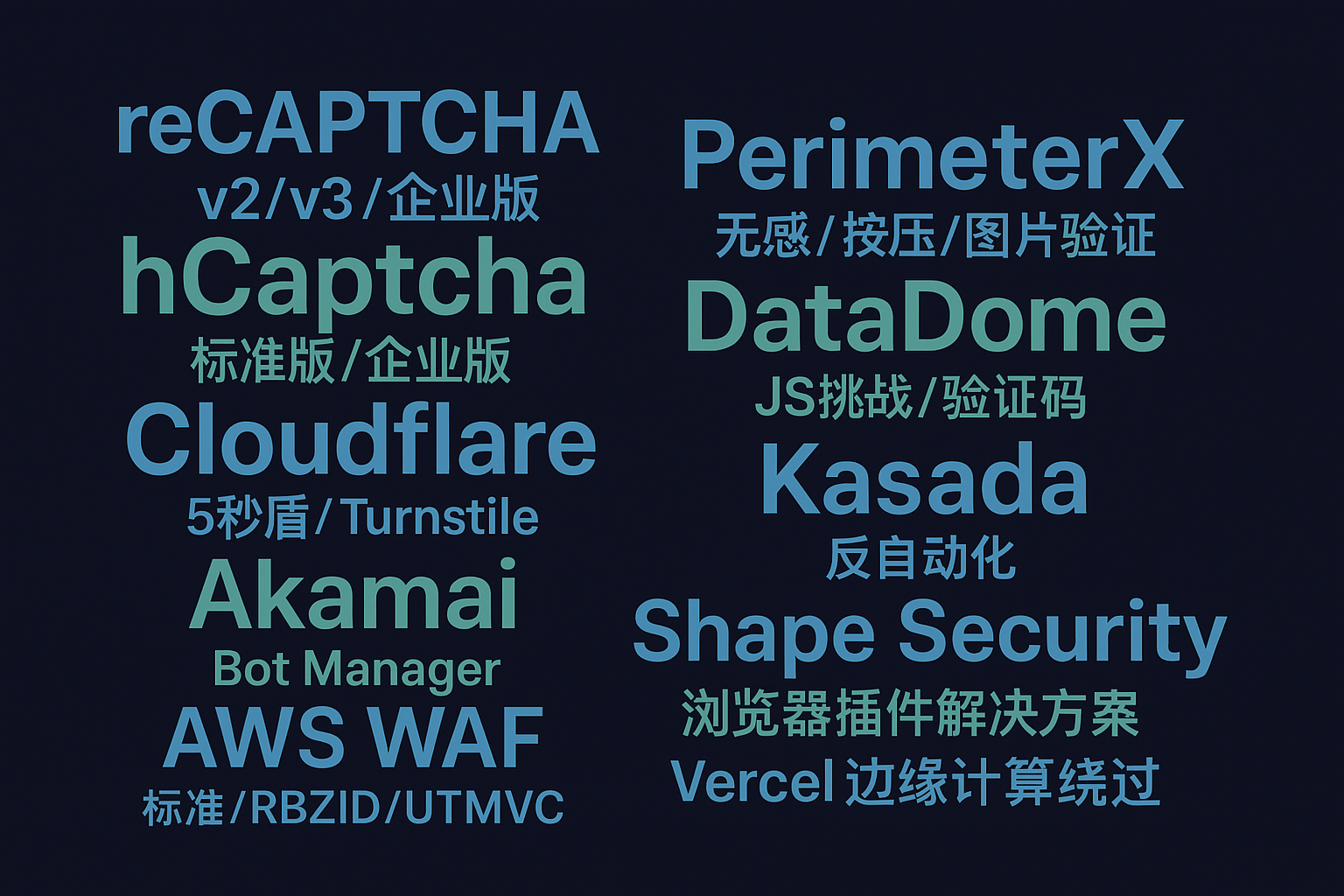Akamai企业级CDN安全防护体系:边缘计算与威胁检测技术深度整合
深入解析Akamai企业级CDN安全防护的完整技术体系,探讨边缘计算与智能威胁检测的深度整合,为全球化企业构建分布式、自适应的网络安全防护方案。
Akamai企业级CDN安全防护体系:边缘计算与威胁检测技术深度整合
技术概述
Akamai作为全球领先的CDN和边缘安全服务提供商,为企业构建了覆盖全球的分布式安全防护网络。在现代企业数字化转型的背景下,传统的集中式安全架构已难以应对分布式攻击和大规模威胁,Akamai通过将安全防护能力下沉到边缘节点,实现了更加敏捷、高效的威胁响应机制。
边缘计算与安全防护的深度整合为现代企业安全架构带来了革命性改变。通过在全球数千个边缘节点部署智能安全引擎,Akamai能够实现威胁的就近检测和实时阻断,大幅降低攻击响应时间和影响范围。这种分布式防护模式不仅提升了安全防护效果,更为企业提供了更好的用户体验和服务可用性。
本文将深入探讨Akamai企业级CDN安全防护体系的技术架构、核心算法和实现方案,重点分析边缘计算环境下的威胁检测技术、分布式安全策略协调机制,以及智能化安全运维体系的构建方法。
核心原理与代码实现
分布式边缘安全架构
Akamai的边缘安全架构是其核心优势所在。以下代码展示了分布式安全节点的实现框架:
import asyncio
import json
import time
from typing import Dict, List, Optional, Any
from dataclasses import dataclass, field
from datetime import datetime, timedelta
from geopy.distance import geodesic
import numpy as np
from sklearn.ensemble import IsolationForest
from sklearn.preprocessing import StandardScaler
import redis.asyncio as redis
from concurrent.futures import ThreadPoolExecutor
@dataclass
class EdgeSecurityNode:
node_id: str
location: Dict[str, float] # {"lat": x, "lon": y}
capacity: Dict[str, int]
current_load: Dict[str, float]
security_modules: List[str]
threat_intelligence: Dict
performance_metrics: Dict = field(default_factory=dict)
@dataclass
class ThreatEvent:
event_id: str
threat_type: str
severity: str
source_ip: str
target_resource: str
detection_time: datetime
edge_node_id: str
confidence_score: float
mitigation_actions: List[str] = field(default_factory=list)
class AkamaiEdgeSecurityManager:
"""Akamai边缘安全管理器"""
def __init__(self, config: Dict):
self.config = config
self.edge_nodes = {}
self.global_threat_intelligence = GlobalThreatIntelligence()
self.load_balancer = IntelligentLoadBalancer()
self.security_orchestrator = SecurityOrchestrator()
self.edge_coordinator = EdgeCoordinator()
self.performance_monitor = PerformanceMonitor()
self.ml_engine = MachineLearningSecurityEngine()
async def initialize_edge_network(self, node_configs: List[Dict]):
"""初始化边缘安全网络"""
for node_config in node_configs:
node = EdgeSecurityNode(
node_id=node_config['node_id'],
location=node_config['location'],
capacity=node_config['capacity'],
current_load={module: 0.0 for module in node_config['security_modules']},
security_modules=node_config['security_modules'],
threat_intelligence={}
)
self.edge_nodes[node.node_id] = node
# 为每个节点初始化安全模块
await self._initialize_node_security_modules(node)
# 建立节点间协调机制
await self.edge_coordinator.establish_coordination_network(
list(self.edge_nodes.keys())
)
print(f"Initialized {len(self.edge_nodes)} edge security nodes")
async def _initialize_node_security_modules(self, node: EdgeSecurityNode):
"""初始化节点安全模块"""
security_modules = {}
for module_name in node.security_modules:
if module_name == 'waf':
security_modules[module_name] = EdgeWebApplicationFirewall(node.node_id)
elif module_name == 'ddos_protection':
security_modules[module_name] = EdgeDDoSProtection(node.node_id)
elif module_name == 'bot_management':
security_modules[module_name] = EdgeBotManagement(node.node_id)
elif module_name == 'api_security':
security_modules[module_name] = EdgeAPISecurityGateway(node.node_id)
elif module_name == 'threat_intelligence':
security_modules[module_name] = EdgeThreatIntelligence(node.node_id)
# 将安全模块绑定到节点
node.security_modules_instances = security_modules
# 初始化威胁检测模型
await self._deploy_ml_models_to_node(node)
async def process_security_request(self, request_data: Dict) -> Dict:
"""处理安全请求"""
start_time = time.time()
# 选择最佳边缘节点
optimal_node = await self._select_optimal_edge_node(
request_data['client_location']
)
if not optimal_node:
return {
'status': 'error',
'message': 'No available edge nodes',
'processing_time': time.time() - start_time
}
try:
# 在边缘节点执行安全检查
security_result = await self._execute_edge_security_checks(
optimal_node, request_data
)
# 更新节点负载
self._update_node_load(optimal_node.node_id, security_result)
# 记录性能指标
processing_time = time.time() - start_time
await self.performance_monitor.record_request_metrics(
optimal_node.node_id, processing_time, security_result
)
return {
'status': 'success',
'edge_node_id': optimal_node.node_id,
'security_result': security_result,
'processing_time': processing_time
}
except Exception as e:
return {
'status': 'error',
'message': str(e),
'processing_time': time.time() - start_time
}
async def _select_optimal_edge_node(self, client_location: Dict) -> Optional[EdgeSecurityNode]:
"""选择最佳边缘节点"""
if not client_location or not self.edge_nodes:
return None
node_scores = {}
client_coord = (client_location.get('lat', 0), client_location.get('lon', 0))
for node_id, node in self.edge_nodes.items():
# 计算地理距离
node_coord = (node.location['lat'], node.location['lon'])
distance = geodesic(client_coord, node_coord).kilometers
# 计算负载因子
avg_load = np.mean(list(node.current_load.values()))
# 计算可用容量
total_capacity = sum(node.capacity.values())
current_usage = sum(node.current_load.values()) * total_capacity / 100
available_capacity = max(0, total_capacity - current_usage)
# 综合评分:距离(40%) + 负载(35%) + 可用容量(25%)
distance_score = max(0, 1 - (distance / 10000)) # 标准化距离
load_score = max(0, 1 - avg_load)
capacity_score = available_capacity / max(total_capacity, 1)
total_score = (
distance_score * 0.4 +
load_score * 0.35 +
capacity_score * 0.25
)
node_scores[node_id] = total_score
# 选择评分最高的节点
best_node_id = max(node_scores.items(), key=lambda x: x[1])[0]
return self.edge_nodes[best_node_id]
async def _execute_edge_security_checks(self, node: EdgeSecurityNode,
request_data: Dict) -> Dict:
"""在边缘节点执行安全检查"""
security_results = {
'node_id': node.node_id,
'checks_performed': [],
'threats_detected': [],
'actions_taken': [],
'overall_risk_score': 0.0
}
# 并行执行各种安全检查
security_checks = []
for module_name, module_instance in node.security_modules_instances.items():
check_task = self._run_security_module_check(
module_instance, request_data, module_name
)
security_checks.append((module_name, check_task))
# 等待所有检查完成
check_results = {}
for module_name, check_task in security_checks:
try:
result = await check_task
check_results[module_name] = result
security_results['checks_performed'].append(module_name)
except Exception as e:
check_results[module_name] = {
'error': str(e),
'risk_score': 0.5 # 默认中等风险
}
# 聚合安全检查结果
aggregated_result = self._aggregate_security_results(check_results)
security_results.update(aggregated_result)
# 执行威胁响应
if security_results['overall_risk_score'] > 0.7:
response_actions = await self._execute_threat_response(
node, security_results, request_data
)
security_results['actions_taken'] = response_actions
return security_results
async def _run_security_module_check(self, module_instance: Any,
request_data: Dict, module_name: str) -> Dict:
"""运行安全模块检查"""
if module_name == 'waf':
return await module_instance.check_web_attack_patterns(request_data)
elif module_name == 'ddos_protection':
return await module_instance.detect_ddos_patterns(request_data)
elif module_name == 'bot_management':
return await module_instance.analyze_bot_behavior(request_data)
elif module_name == 'api_security':
return await module_instance.validate_api_security(request_data)
elif module_name == 'threat_intelligence':
return await module_instance.correlate_threat_intelligence(request_data)
else:
return {'risk_score': 0.0, 'status': 'unknown_module'}
智能威胁检测与响应系统
专业反爬虫绕过技术 - 行为检测对抗专家的研究表明,边缘环境下的威胁检测需要特殊的优化策略。以下代码实现了高效的边缘威胁检测系统:
class EdgeThreatDetectionEngine:
"""边缘威胁检测引擎"""
def __init__(self, node_id: str):
self.node_id = node_id
self.anomaly_detectors = self._initialize_anomaly_detectors()
self.signature_engine = SignatureMatchingEngine()
self.behavioral_analyzer = BehavioralAnalyzer()
self.ml_classifier = LightweightMLClassifier()
self.threat_correlator = ThreatCorrelator()
def _initialize_anomaly_detectors(self) -> Dict:
"""初始化异常检测器"""
return {
'statistical': StatisticalAnomalyDetector(),
'isolation_forest': IsolationForest(contamination=0.1, random_state=42),
'clustering': ClusteringAnomalyDetector(),
'time_series': TimeSeriesAnomalyDetector()
}
async def detect_threats_realtime(self, traffic_stream: AsyncIterator) -> AsyncIterator[ThreatEvent]:
"""实时威胁检测"""
detection_buffer = []
buffer_size = 1000
async for traffic_sample in traffic_stream:
detection_buffer.append(traffic_sample)
# 当缓冲区满时,执行批量检测
if len(detection_buffer) >= buffer_size:
threat_events = await self._process_traffic_batch(detection_buffer)
for event in threat_events:
yield event
detection_buffer.clear()
async def _process_traffic_batch(self, traffic_batch: List[Dict]) -> List[ThreatEvent]:
"""处理流量批次"""
detected_threats = []
# 并行运行多种检测方法
detection_tasks = [
self._signature_based_detection(traffic_batch),
self._anomaly_based_detection(traffic_batch),
self._behavioral_detection(traffic_batch),
self._ml_based_detection(traffic_batch)
]
detection_results = await asyncio.gather(*detection_tasks, return_exceptions=True)
# 融合检测结果
fused_results = self._fuse_detection_results(detection_results)
# 生成威胁事件
for result in fused_results:
if result['is_threat'] and result['confidence'] > 0.7:
threat_event = ThreatEvent(
event_id=f"{self.node_id}_{int(time.time())}_{hash(str(result))}",
threat_type=result['threat_type'],
severity=self._calculate_severity(result),
source_ip=result['source_ip'],
target_resource=result['target'],
detection_time=datetime.now(),
edge_node_id=self.node_id,
confidence_score=result['confidence']
)
detected_threats.append(threat_event)
return detected_threats
async def _signature_based_detection(self, traffic_batch: List[Dict]) -> List[Dict]:
"""基于签名的检测"""
signature_results = []
for traffic_sample in traffic_batch:
# 检查已知攻击签名
signature_matches = await self.signature_engine.match_signatures(
traffic_sample
)
if signature_matches:
for match in signature_matches:
signature_results.append({
'source_ip': traffic_sample.get('src_ip'),
'target': traffic_sample.get('dst_resource'),
'threat_type': match['attack_type'],
'confidence': match['confidence'],
'is_threat': True,
'detection_method': 'signature'
})
return signature_results
async def _anomaly_based_detection(self, traffic_batch: List[Dict]) -> List[Dict]:
"""基于异常的检测"""
anomaly_results = []
# 提取流量特征
features = self._extract_traffic_features(traffic_batch)
if len(features) == 0:
return anomaly_results
# 运行异常检测算法
for detector_name, detector in self.anomaly_detectors.items():
try:
if detector_name == 'isolation_forest':
anomaly_scores = detector.decision_function(features)
anomaly_predictions = detector.predict(features)
for i, (score, prediction) in enumerate(zip(anomaly_scores, anomaly_predictions)):
if prediction == -1: # 异常
anomaly_results.append({
'source_ip': traffic_batch[i].get('src_ip'),
'target': traffic_batch[i].get('dst_resource'),
'threat_type': 'anomalous_behavior',
'confidence': abs(score),
'is_threat': True,
'detection_method': f'anomaly_{detector_name}'
})
elif detector_name == 'statistical':
statistical_results = await detector.detect_anomalies(features)
anomaly_results.extend(statistical_results)
except Exception as e:
print(f"Anomaly detection error with {detector_name}: {e}")
continue
return anomaly_results
def _extract_traffic_features(self, traffic_batch: List[Dict]) -> np.ndarray:
"""提取流量特征"""
features = []
for sample in traffic_batch:
feature_vector = [
sample.get('packet_size', 0),
sample.get('request_rate', 0),
sample.get('payload_entropy', 0),
sample.get('header_count', 0),
sample.get('connection_duration', 0),
len(sample.get('user_agent', '')),
len(sample.get('url_path', '')),
sample.get('response_code', 200),
sample.get('bytes_transferred', 0),
sample.get('tcp_flags', 0)
]
features.append(feature_vector)
return np.array(features)
def _fuse_detection_results(self, detection_results: List) -> List[Dict]:
"""融合检测结果"""
fused_results = []
# 按源IP聚合结果
ip_results = {}
for result_set in detection_results:
if isinstance(result_set, Exception):
continue
for result in result_set:
source_ip = result['source_ip']
if source_ip not in ip_results:
ip_results[source_ip] = []
ip_results[source_ip].append(result)
# 为每个IP生成融合结果
for source_ip, results in ip_results.items():
if not results:
continue
# 计算加权置信度
method_weights = {
'signature': 0.4,
'anomaly_isolation_forest': 0.25,
'anomaly_statistical': 0.2,
'behavioral': 0.15
}
weighted_confidence = 0.0
total_weight = 0.0
threat_types = set()
for result in results:
method = result['detection_method']
weight = method_weights.get(method, 0.1)
confidence = result['confidence']
weighted_confidence += confidence * weight
total_weight += weight
threat_types.add(result['threat_type'])
if total_weight > 0:
final_confidence = weighted_confidence / total_weight
fused_results.append({
'source_ip': source_ip,
'target': results[0]['target'],
'threat_type': '|'.join(threat_types),
'confidence': final_confidence,
'is_threat': final_confidence > 0.5,
'detection_methods': [r['detection_method'] for r in results]
})
return fused_results
全球安全策略协调系统
企业级CDN安全需要全球策略协调能力。高级网络技术服务 - 专业技术解决方案提供的分布式安全最佳实践指导了以下实现:
class GlobalSecurityCoordinator:
"""全球安全策略协调器"""
def __init__(self, config: Dict):
self.config = config
self.regional_managers = {}
self.global_policy_engine = GlobalPolicyEngine()
self.threat_sharing_network = ThreatSharingNetwork()
self.consensus_manager = ConsensusManager()
self.strategy_optimizer = SecurityStrategyOptimizer()
async def coordinate_global_security_response(self, threat_event: ThreatEvent) -> Dict:
"""协调全球安全响应"""
coordination_result = {
'response_id': f"global_response_{int(time.time())}",
'threat_event_id': threat_event.event_id,
'coordinated_actions': [],
'affected_regions': [],
'response_effectiveness': 0.0
}
try:
# 威胁情报共享
sharing_result = await self.threat_sharing_network.share_threat_intelligence(
threat_event
)
# 识别受影响的区域
affected_regions = await self._identify_affected_regions(threat_event)
coordination_result['affected_regions'] = affected_regions
# 为每个区域生成响应策略
regional_strategies = {}
for region in affected_regions:
strategy = await self._generate_regional_response_strategy(
region, threat_event
)
regional_strategies[region] = strategy
# 协调跨区域响应
coordinated_actions = await self._coordinate_cross_regional_response(
regional_strategies, threat_event
)
coordination_result['coordinated_actions'] = coordinated_actions
# 评估响应效果
effectiveness = await self._evaluate_response_effectiveness(
coordinated_actions, threat_event
)
coordination_result['response_effectiveness'] = effectiveness
return coordination_result
except Exception as e:
coordination_result['error'] = str(e)
return coordination_result
async def _identify_affected_regions(self, threat_event: ThreatEvent) -> List[str]:
"""识别受威胁影响的区域"""
affected_regions = []
# 基于威胁类型确定影响范围
if threat_event.threat_type in ['ddos', 'distributed_attack']:
# DDoS攻击可能影响多个区域
affected_regions = await self._analyze_ddos_impact_scope(threat_event)
elif threat_event.threat_type in ['malware_c2', 'botnet']:
# 恶意软件可能有全球影响
affected_regions = ['global']
else:
# 其他威胁主要影响本地区域
source_region = await self._identify_source_region(threat_event.source_ip)
affected_regions = [source_region]
return affected_regions
async def _generate_regional_response_strategy(self, region: str,
threat_event: ThreatEvent) -> Dict:
"""生成区域响应策略"""
strategy = {
'region': region,
'priority_level': self._calculate_priority_level(threat_event),
'response_actions': [],
'resource_allocation': {},
'coordination_requirements': []
}
# 基于威胁严重程度确定响应动作
if threat_event.severity == 'critical':
strategy['response_actions'].extend([
'immediate_traffic_blocking',
'emergency_rate_limiting',
'backup_route_activation'
])
elif threat_event.severity == 'high':
strategy['response_actions'].extend([
'enhanced_monitoring',
'selective_blocking',
'threat_signature_update'
])
else:
strategy['response_actions'].extend([
'increased_logging',
'threat_intelligence_correlation'
])
# 资源分配
strategy['resource_allocation'] = {
'cpu_allocation': self._calculate_cpu_needs(threat_event),
'memory_allocation': self._calculate_memory_needs(threat_event),
'bandwidth_allocation': self._calculate_bandwidth_needs(threat_event)
}
return strategy
async def optimize_global_security_policies(self) -> Dict:
"""优化全球安全策略"""
optimization_result = {
'optimization_timestamp': time.time(),
'policy_updates': [],
'performance_improvements': {},
'cost_savings': 0.0
}
try:
# 收集全球性能数据
global_metrics = await self._collect_global_performance_metrics()
# 分析策略效果
policy_effectiveness = await self.strategy_optimizer.analyze_policy_effectiveness(
global_metrics
)
# 生成优化建议
optimization_recommendations = await self.strategy_optimizer.generate_optimizations(
policy_effectiveness
)
# 实施策略更新
for recommendation in optimization_recommendations:
update_result = await self._implement_policy_update(recommendation)
optimization_result['policy_updates'].append(update_result)
# 计算性能改进
performance_improvements = await self._measure_optimization_impact(
optimization_recommendations
)
optimization_result['performance_improvements'] = performance_improvements
return optimization_result
except Exception as e:
optimization_result['error'] = str(e)
return optimization_result
技术价值与发展趋势
Akamai企业级CDN安全防护体系代表了现代分布式网络安全技术的重要发展方向。通过将安全防护能力部署到边缘节点,实现了威胁的就近检测和快速响应,大幅提升了企业网络安全的防护效果和用户体验。这种边缘安全模式不仅解决了传统集中式安全架构的局限性,更为构建全球化企业安全防护体系提供了技术基础。
从技术发展趋势看,未来的CDN安全服务将更加智能化和自动化。通过人工智能和机器学习技术的深度应用,边缘安全节点将具备更强的自主决策能力,能够实时适应新的威胁模式。同时,5G和边缘计算技术的发展将进一步推动安全防护向边缘迁移,为用户提供更加低延迟、高可靠的安全服务。

关键词标签: Akamai企业级CDN安全, 边缘计算安全防护, 分布式威胁检测, 全球安全策略协调, 智能边缘防护, CDN安全优化, 边缘安全架构, 企业网络防护
更多推荐
 已为社区贡献26条内容
已为社区贡献26条内容









所有评论(0)